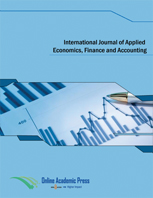How funding liquidity influences bank lending: Empirical evidence from Vietnam
DOI:
https://doi.org/10.33094/ijaefa.v21i2.2118Keywords:
Bank lending, Banks, Funding liquidity, Panel data, Vietnam.Abstract
This paper investigates the impact of funding liquidity on bank lending at 26 Vietnamese commercial banks in the period 2003–2023. Our paper uses panel data regression methods combined with endogeneity tests and robustness tests to produce consistent research results. The econometric methods used in the paper include multiple fixed-effects regression, the generalized method of moments (GMM), Prais-Winsten regression, Newey-West regression, and two-way clustering regression. Accordingly, the empirical results indicate that funding liquidity has a negative impact on Vietnamese commercial banks' loan growth. In particular, the results from the quantile regression model show that the negative impact of funding liquidity on bank lending becomes stronger for banks with higher loan growth. Furthermore, factors such as bank size, capitalization, and the cost-to-income ratio also have a negative impact on bank lending, whereas income diversification enhances banks' capacity to provide loans. Based on empirical research, this article also proposes some solutions to help Vietnamese commercial banks lend more safely and effectively, including: (i) improving funding liquidity management strategies to minimize negative impacts on lending activities; (ii) encouraging banks to diversify their income rather than relying solely on credit activities; (iii) enhancing banks' ability to manage costs and control their size. Investors, managers, and policymakers can all benefit from our conclusions and ramifications.
Downloads
Published
Issue
Section

This work is licensed under a Creative Commons Attribution-NonCommercial 4.0 International License.




